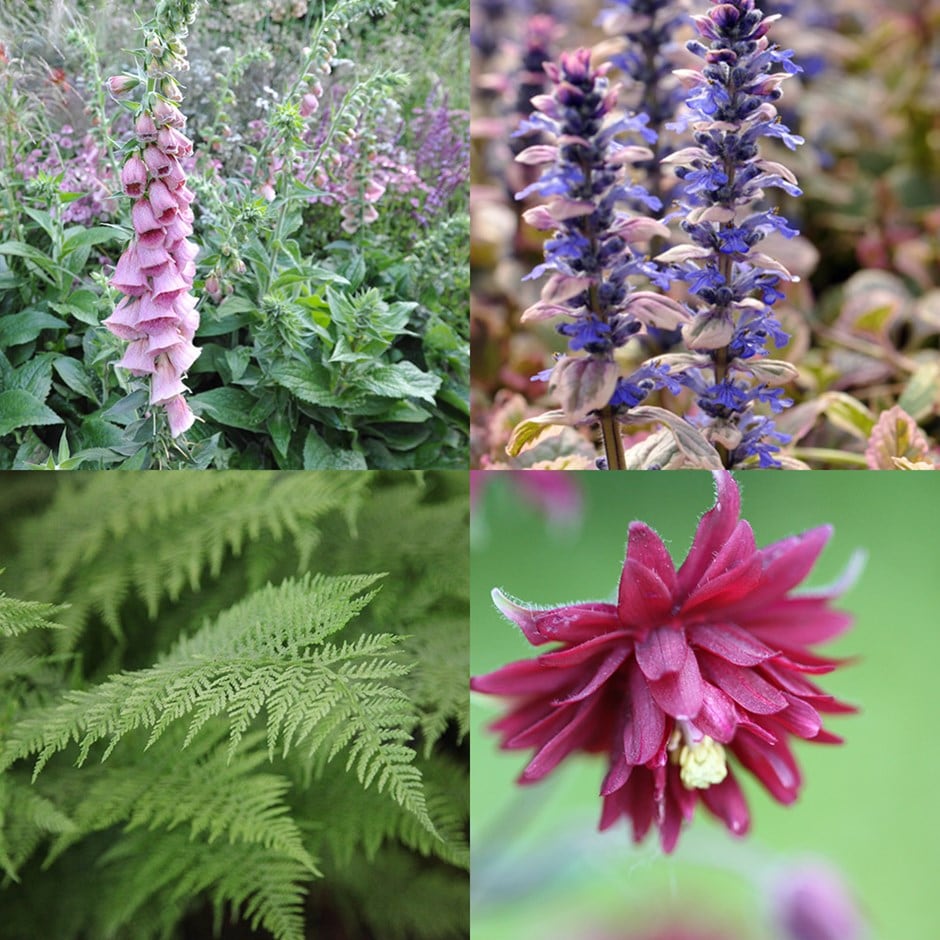Slug-resistant plant combination for shade
Slug resistant plant combination
- 4 × plants | 1 of each
- £27.96
- In stock (shipped within 3-5 working days)
Delivery options
- Standard £5.95
- Athyrium filix-femina: This is the lady fern, with graceful, bright green, filigree-like leaves. One of our recommended plants, it looks great planted in bold swathes with other shade-loving plants in a sheltered, shady woodland edge, shrub or mixed border. It is deciduous, and begins to look tatty in the autumn, so try it among evergreen ferns or late-flowering perennials. Grows to 1.2m.
- Ajuga reptans 'Burgundy Glow': A useful plant for the edge of a shady border, ajuga also makes good groundcover as it soon knits together to form an evergreen carpet. This one has multi-coloured, evergreen foliage with wine red splashes and cream margins and dense, upright spires of deep blue flowers in spring. Tolerates sun or shade and poor soils, but does not like to dry out. Grows to 10cm.
- Aquilegia vulgaris var. stellata 'Black Barlow' A popular cultivar among garden designers, this lovely granny's bonnet has beautiful, fully double, spur-less purple-black flowers in late spring above fern-like green leaves. It looks gorgeous with other black flowers and is equally at home in cottage garden schemes or among grasses. Grows to 90cm.
- Digitalis × mertonensis This striking and robust short-lived perennial is a hybrid between the pink flowered D. purpurea and the yellow flowered D. grandiflora. The resulting plant produces bell-shaped flowers in late spring and early summer, which are an intriguing mix of the two shades. Grows to 90cm.
- Planting tips: Prepare the bed well by digging in lots of composted organic matter before you plant. For best results it is essential that the plants are kept well watered for the first year, particularly during warmer weather.
These plants will add structure, volume and colour to a partially shaded area - and they are usually given a wide berth by slugs and snails.
In this collection you will receive one of each of the following plants. They are all supplied in a 9cm nursery pot.
